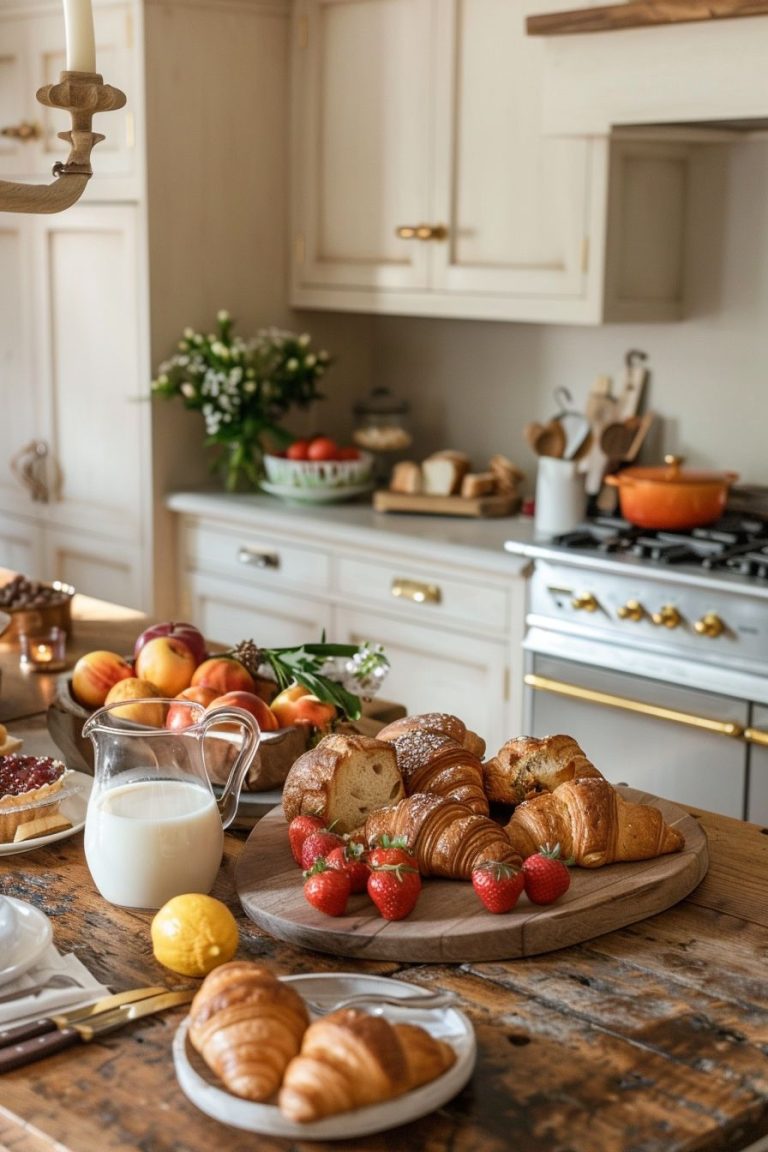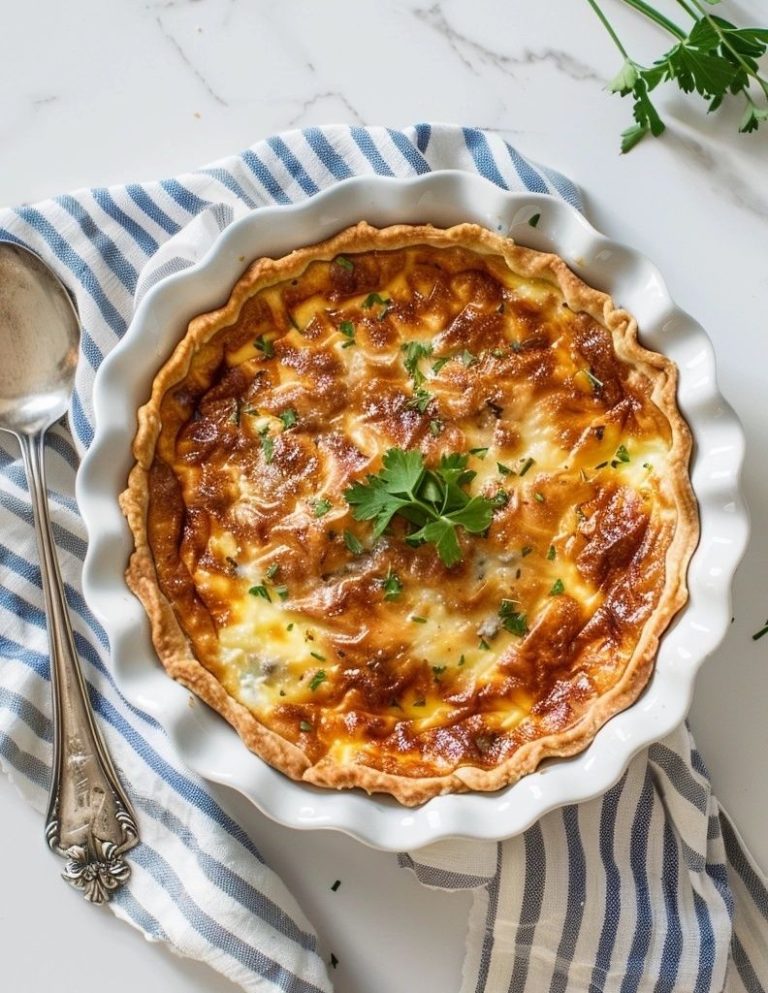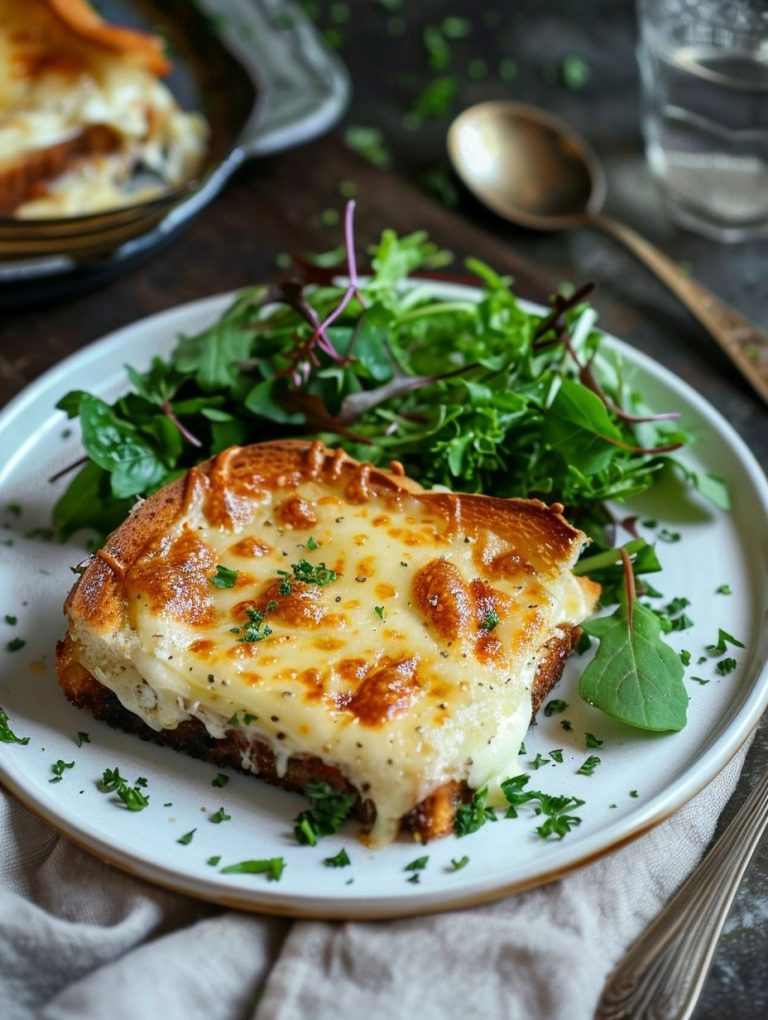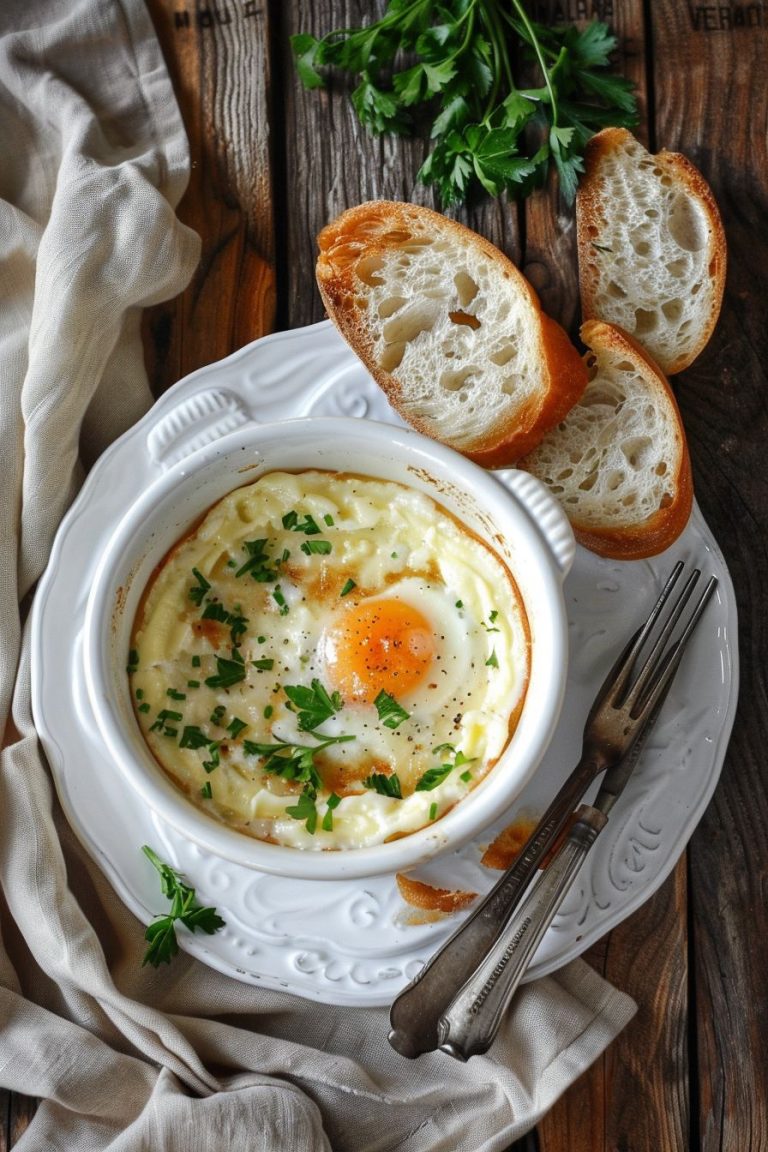12 Quick & Easy French Lunch Recipes for a Delightful Mid-Day Meal
We may earn a commission through all links on this website. As an Amazon Associate, we earn from qualifying purchases.French cuisine is world-renowned for its delicious, complex flavors and techniques. From decadent desserts to savory main courses, French cooking is an art form that has been perfected over centuries. But French cooking isn’t just limited to elaborate meals. Many delicious, easy-to-make French lunch recipes are perfect for an effortless meal or a fun family gathering. Let’s explore some of the best French lunch recipes and why they’re so beloved.

Quiche Lorraine
Quiche Lorraine is a savory pie that hails from the Lorraine region of France. It’s a classic and well-loved dish that consists of a buttery pastry crust filled with a rich custard made from eggs, cream, or milk, and often includes cheese, seasoning, and various fillings.
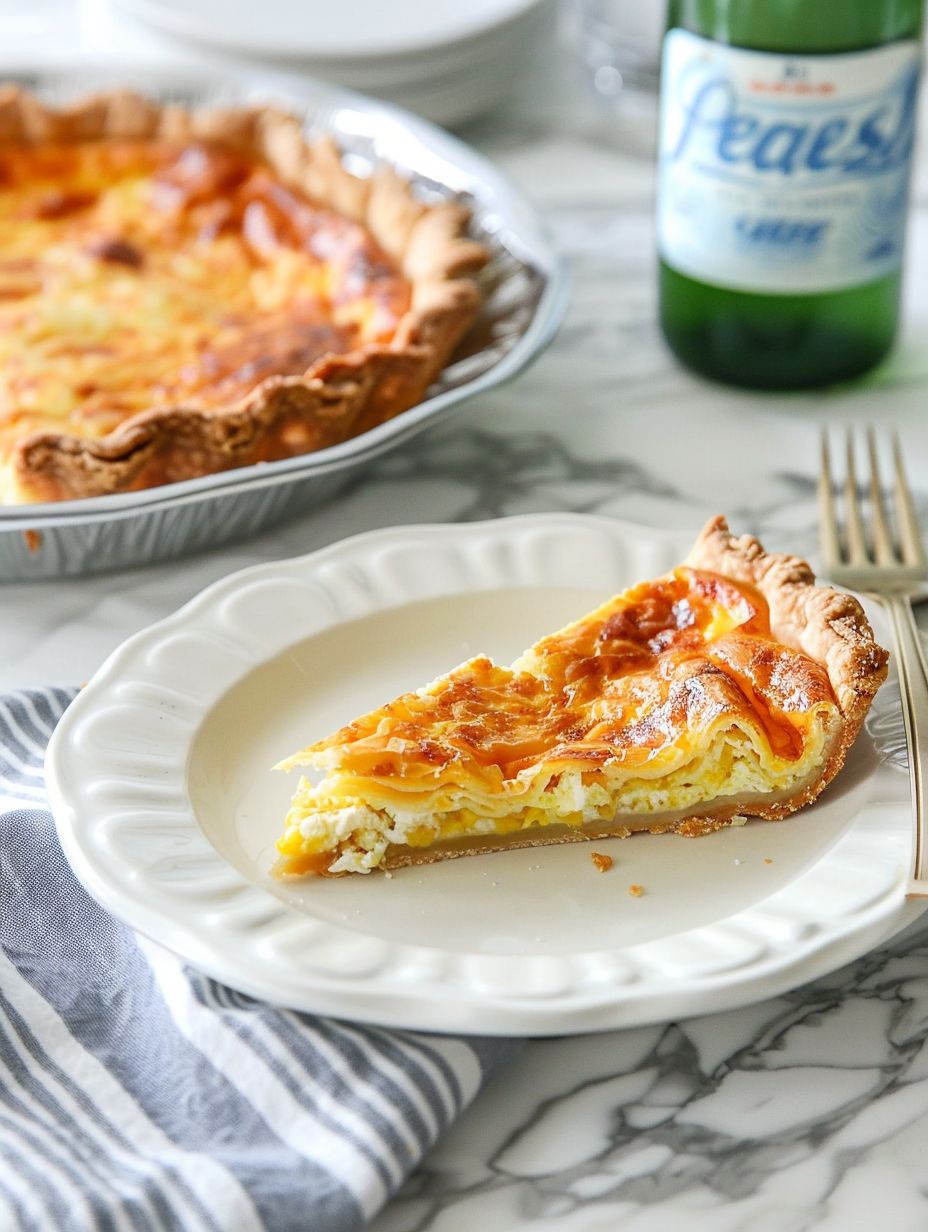
The traditional Quiche Lorraine contains crispy lardons or bacon. The meat is cooked and then combined with the custard mixture, typically seasoned with nutmeg and black pepper. The entire mixture is then poured into the pastry shell and baked until the filling is set and the crust is golden brown.
Over the years, many variations of quiche have emerged, with additional ingredients such as onions, mushrooms, spinach, and various cheeses. However, the original Quiche Lorraine is noted for its simplicity, relying mainly on the flavor of the bacon or lardons and the creamy custard.
Salmon & Avocado Tartare
This is one of my favorite lunches to enjoy at my local café-restaurant in Paris.
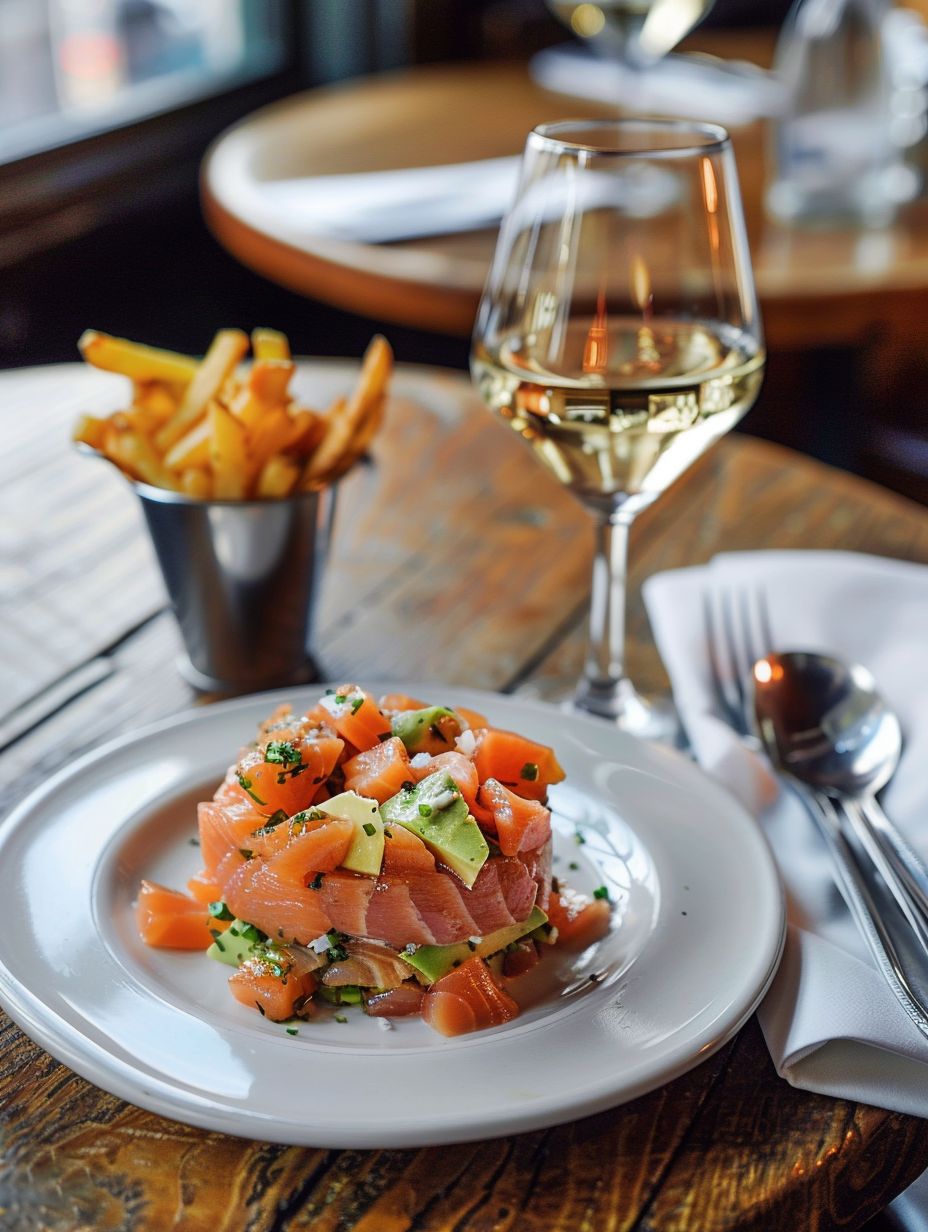
Salmon & Avocado Tartare is a fresh and light French lunch recipe that combines diced raw salmon with ripe avocados, finely chopped red onions, fresh herbs like dill or cilantro, and a squeeze of lemon juice. This dish is not only visually appealing but also packed with nutrients and healthy fats from the salmon and avocado.
It’s a great option for those who are looking for a flavorful and easy-to-make dish that is also healthy and satisfying. The recipe requires no cooking, making it a perfect choice for hot summer days or when you want to prepare a quick and delicious meal.
Croque Monsieur or Madame
Croque Monsieur is a classic French lunch meal. This beloved French sandwich is made with slices of ham and cheese, usually Gruyère or Emmental, nestled between two slices of buttered bread. The sandwich is then grilled or fried to a golden brown, and finished with a creamy béchamel sauce and then broiled until bubbly and slightly browned. The finished plate is a warm, crispy, and gooey sandwich that offers a delightful contrast of textures and rich, savory flavors.

The Croque Monsieur is one of the most popular French lunch recipes because it’s a hearty and satisfying meal that provides a fulfilling sense of comfort, making it ideal as a midday meal.
Its preparation is relatively quick, allowing for a delicious meal without a lengthy wait, fitting for a lunch break or a leisurely weekend lunch.
The Croque Monsieur’s status as a classic French dish elevates even a simple lunch into something special. The balance of convenience, satisfaction, and elegance in the Croque Monsieur makes it a wonderful French lunch meal, whether enjoyed in a Parisian café or made at home.
Croque Madame is a variation of the classic French sandwich known as Croque Monsieur, yet it’s distinguished by the addition of a fried or poached egg on top.
Like its counterpart, the Croque Madame consists of buttered bread filled with ham and cheese, typically Gruyère or Emmental, and it is grilled until crispy. A béchamel sauce is spread over the sandwich before grilling, and more cheese may be sprinkled on top for added richness. Once grilled, a perfectly cooked egg is placed on top, with the yolk still runny, creating a visually appealing and delicious addition to the sandwich.
Ham and Cheese Galette
Ham and Cheese Galette is a delicious French-inspired savory tart that combines the richness of ham and cheese with the flakiness of puff pastry. This elegant yet easy-to-make recipe features a buttery crust topped with caramelized onions, thinly sliced ham, and a blend of creamy cheeses, all baked to golden perfection. The result is a satisfying and flavorful dish that’s perfect for a light lunch à la française.
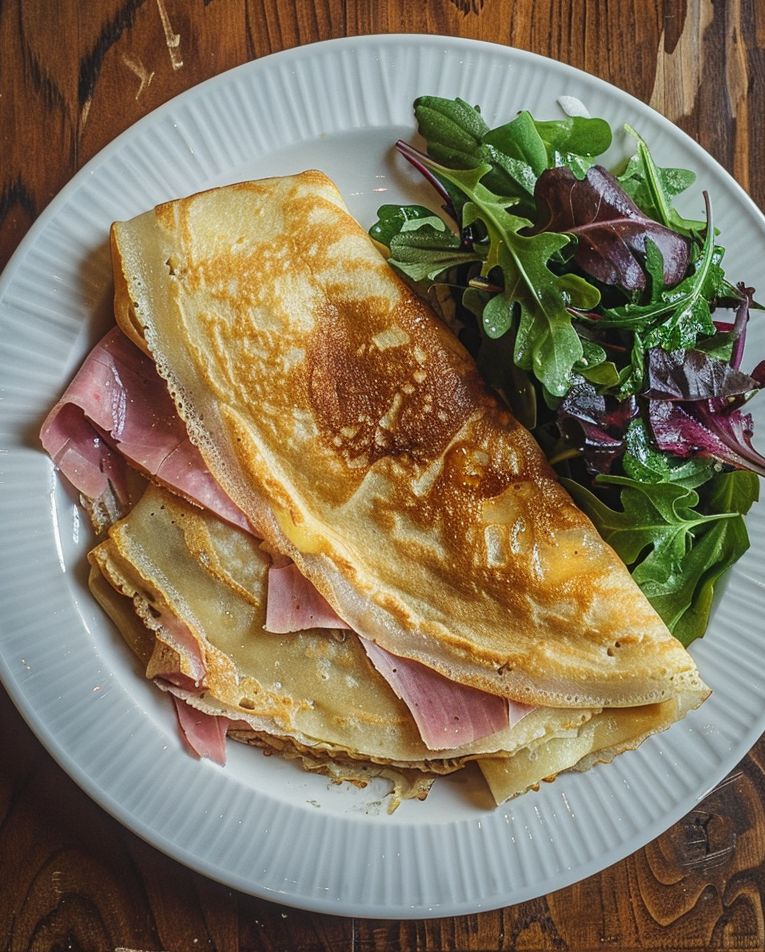
The galette’s versatility makes it an excellent option for a picnic or outdoor gathering. Plus, it’s surprisingly easy to prepare, making it a great option for a quick and impressive lunch.
Niçoise Salad
Salade Niçoise is a vibrant and classic salad that originates from the city of Nice, on the French Riviera. It’s a composed salad that typically includes tomatoes, hard-boiled eggs, olives, anchovies, and tuna, either canned or freshly grilled.
The salad is dressed with olive oil, and may also include other vegetables such as green beans, bell peppers, and artichokes. Fresh herbs like basil and local seasonings are used to bring out the flavors.
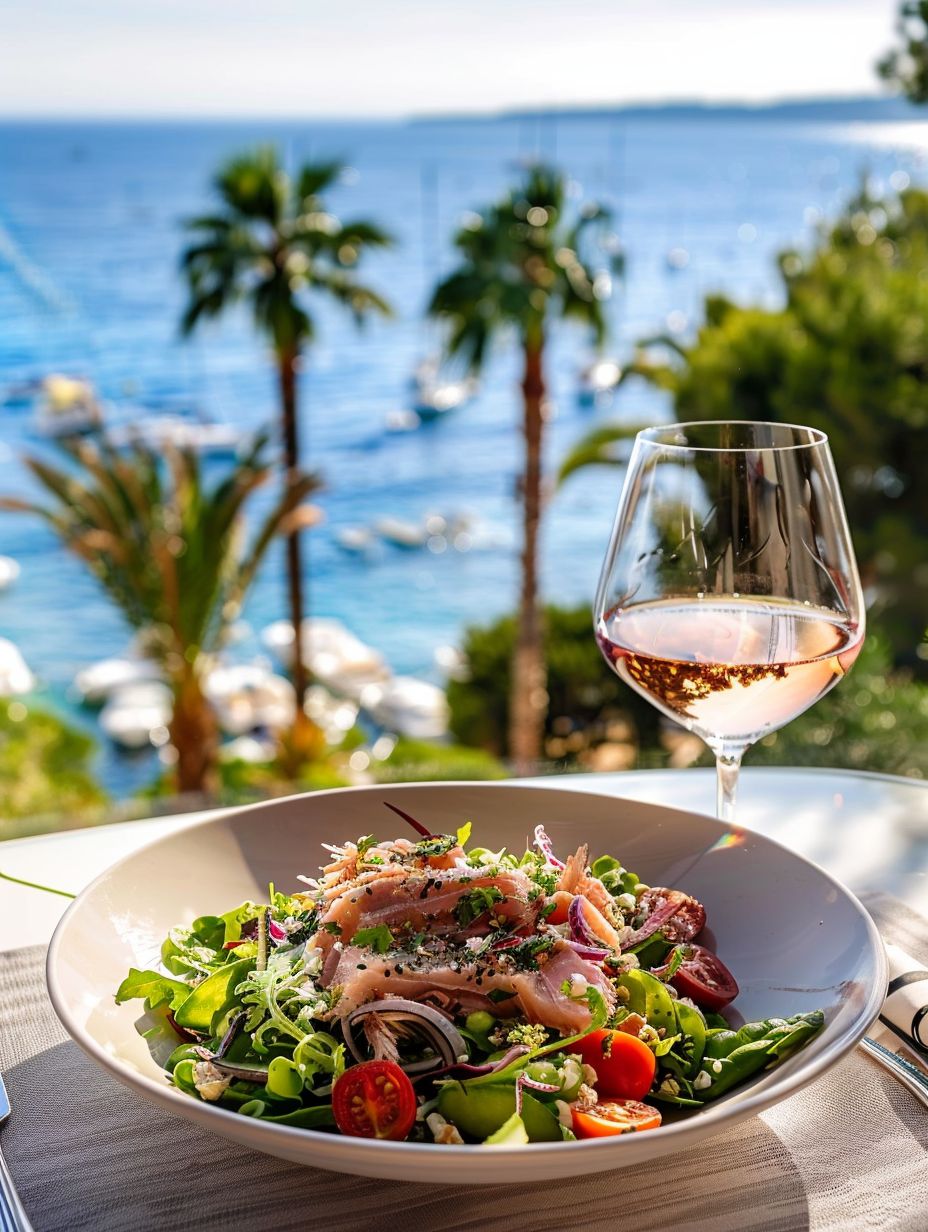
For lunch, a Niçoise Salade packs in freshness, flavor, and nutritional balance. The mix of vegetables provides vitamins and fiber, promoting well-being and satiety without heaviness. The inclusion of protein-rich ingredients like tuna and eggs adds substance to the salad, making it satisfying enough to serve as a primary course. Its flavors are bright offering a pleasing palate experience that’s neither too rich nor too bland.
This French salad’s lightness makes it spot-on for a lunch that fuels the day without weighing you down. The convenience of being able to prepare it in advance also adds to the benefits, whether enjoyed at home, in a bistro, or taken to work.
Its composition encapsulates the essence of Mediterranean cuisine. Enjoying a Salade Niçoise can feel like a quick trip to the sunny French coast. It pairs well with a chilled glass of rosé or white wine.
Fig and Prosciutto Tartine
The Fig and Prosciutto Tartine is a delightful French lunch dish that combines the sweetness of fresh figs with the salty, savory flavors of prosciutto. This open-faced sandwich starts with a slice of crusty, toasted bread that serves as the base. It is then topped with a layer of creamy, spreadable cheese, such as goat cheese or ricotta, followed by slices of ripe, juicy figs and thin slices of prosciutto.
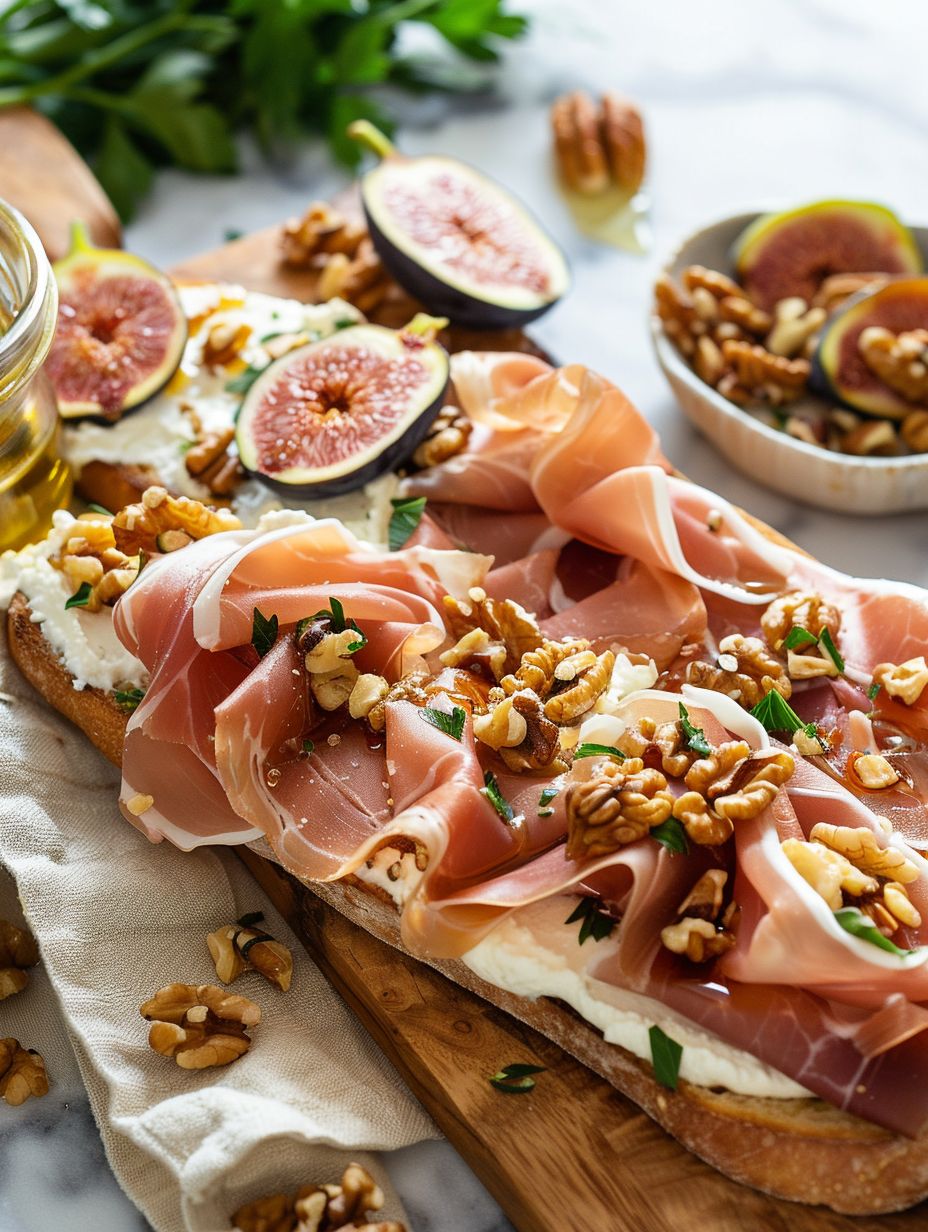
The contrasting textures and flavors of the soft, sweet figs, the salty prosciutto, and the creamy cheese create a harmonious and satisfying bite. This tartine is a fantastic French lunch recipe because it is easy to prepare, portable, and offers a balance of sweet, savory, and umami flavors that can be enjoyed as a light and satisfying midday meal!
Sandwich Parisien
The Sandwich Parisien is a classic French sandwich made with ham, butter, and sometimes cheese on a baguette. It is a popular choice for a quick and satisfying lunch in France. The simplicity of the ingredients allows the flavors to shine through, making it a delicious and straightforward meal option.
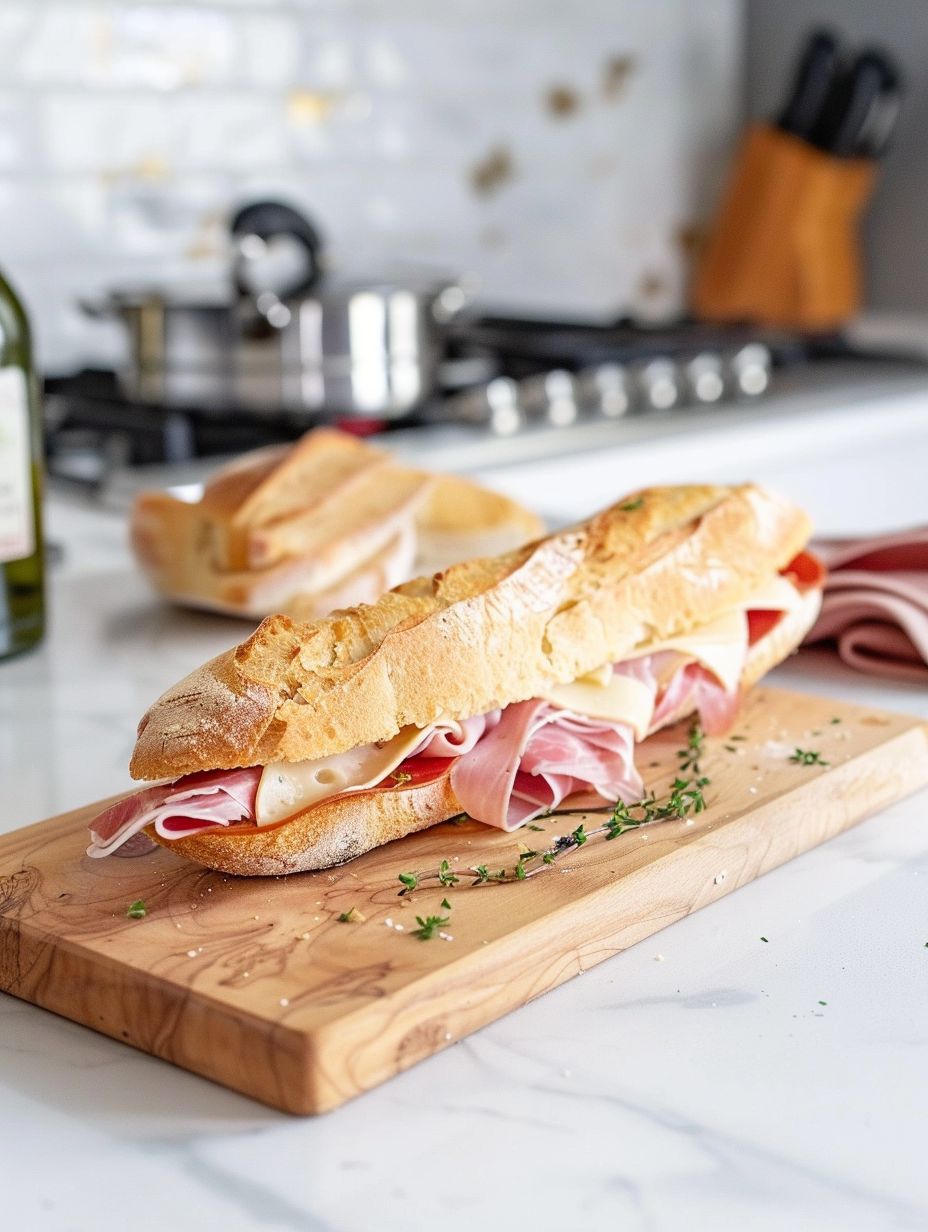
The combination of salty ham, creamy butter, and crusty baguette creates a perfect balance of textures and tastes. Additionally, the Sandwich Parisien is easy to assemble and can be enjoyed on the go, making it a convenient choice for a French lunch recipe.
Jambon Beurre Sandwich
The Jambon Beurre Sandwich is a classic French lunch item that has become a staple in the country’s culinary landscape. It consists of a simple yet delicious combination of high-quality ham and creamy butter, sandwiched between two slices of fresh, crusty bread. The key to this sandwich’s success lies in the quality of its ingredients – the ham is typically thinly sliced and of a superior variety, while the butter is often unsalted and of a rich, creamy texture.
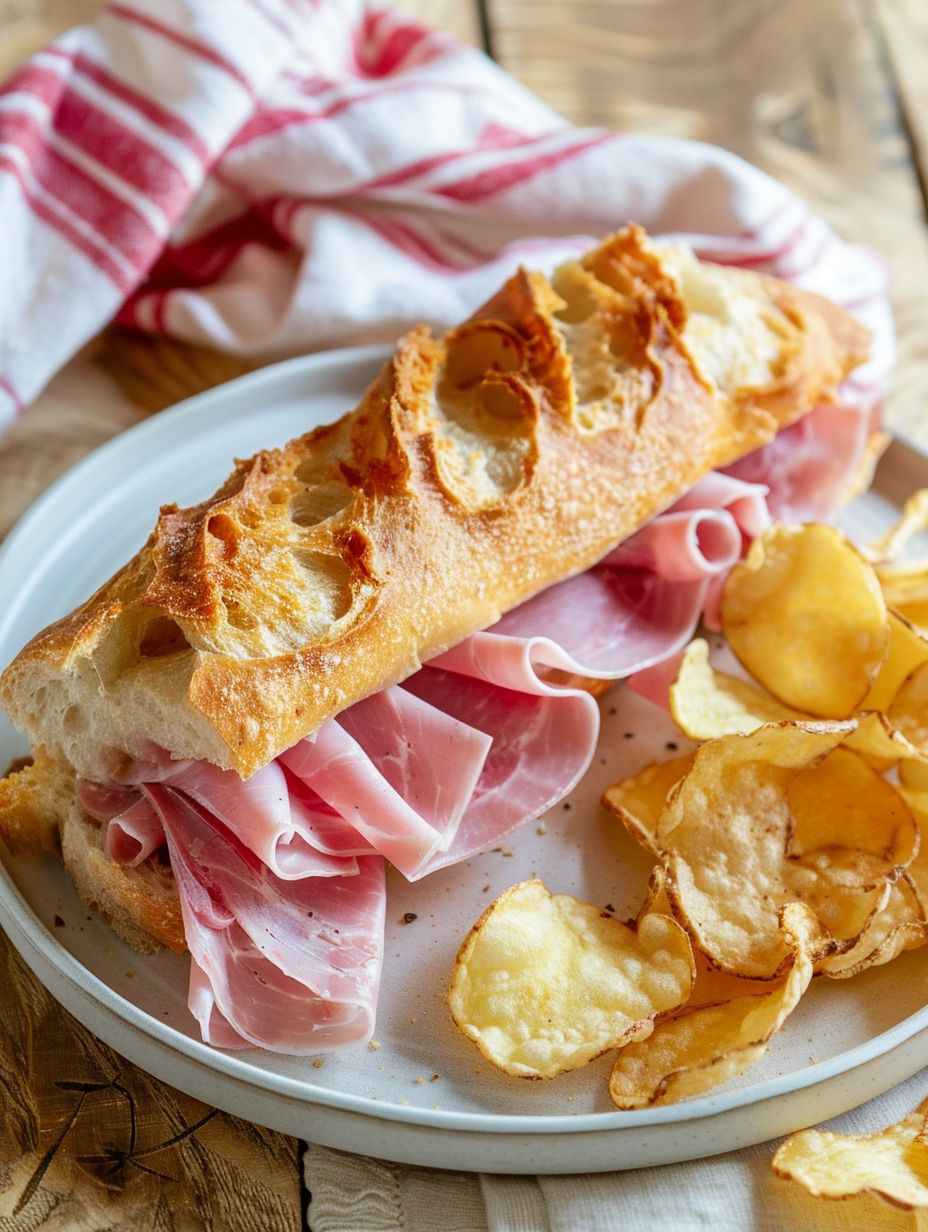
The simplicity of the Jambon Beurre Sandwich allows the flavors of the ham and butter to shine, making it a satisfying and comforting lunch option. It’s a good French lunch recipe because it’s easy to prepare, portable, and provides a satisfying balance of flavors and textures that can be enjoyed on the go or as a leisurely midday meal.
Chicken Paillard with Mixed Greens
Chicken Paillard with Mixed Greens is a light and refreshing French lunch dish that showcases the versatility of the humble chicken breast. The chicken is pounded thin, creating a tender and evenly cooked paillard, which is then grilled or pan-seared to perfection. The paillard is then served atop a bed of mixed greens, such as arugula, spinach, and radicchio, dressed in a simple vinaigrette.
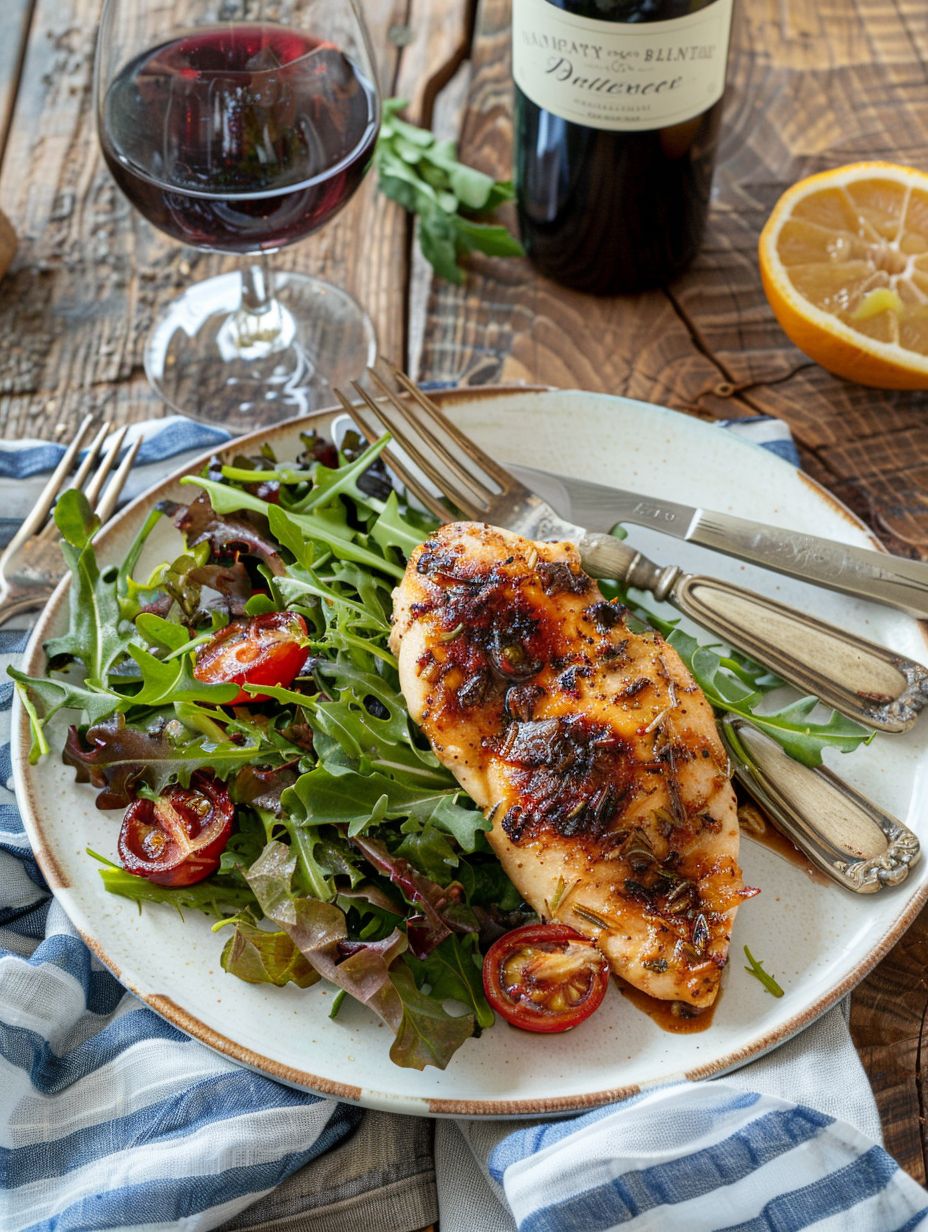
This dish makes for a hearty and filling French lunch recipe because it is relatively quick and easy to prepare, yet it is also light and healthy, making it an ideal midday meal. The use of high-quality, seasonal ingredients and the simplicity of the preparation allow the natural flavors of the dish to shine.
Goat Cheese and Smoked Salmon Tartine
Goat Cheese and Smoked Salmon Tartine is a delightful open-faced sandwich popular in French cuisine. It typically consists of a slice of crusty bread, such as a baguette, toasted and topped with creamy goat cheese, thinly sliced smoked salmon, and often garnished with fresh herbs like dill or chives.

This tartine is an excellent French lunch option because it’s quick to prepare, requires minimal cooking, and offers a good balance of protein and carbohydrates. Its elegant presentation and sophisticated taste make it suitable for both casual meals and more formal occasions, embodying the French approach to simple yet refined cuisine.
Pan Bagnat
Pan Bagnat is a classic French sandwich that originated in the Provence region and has become a beloved lunch option throughout the Côte d’Azur. This sandwich is made by layering a crusty, round bread (typically a pain de campagne) with fresh, flavorful ingredients: tuna or anchovies, hard-boiled eggs, tomatoes, onions, olives, and a tangy vinaigrette dressing. The sandwich is then pressed, allowing the flavors to meld together and the bread to soak up the delicious juices.
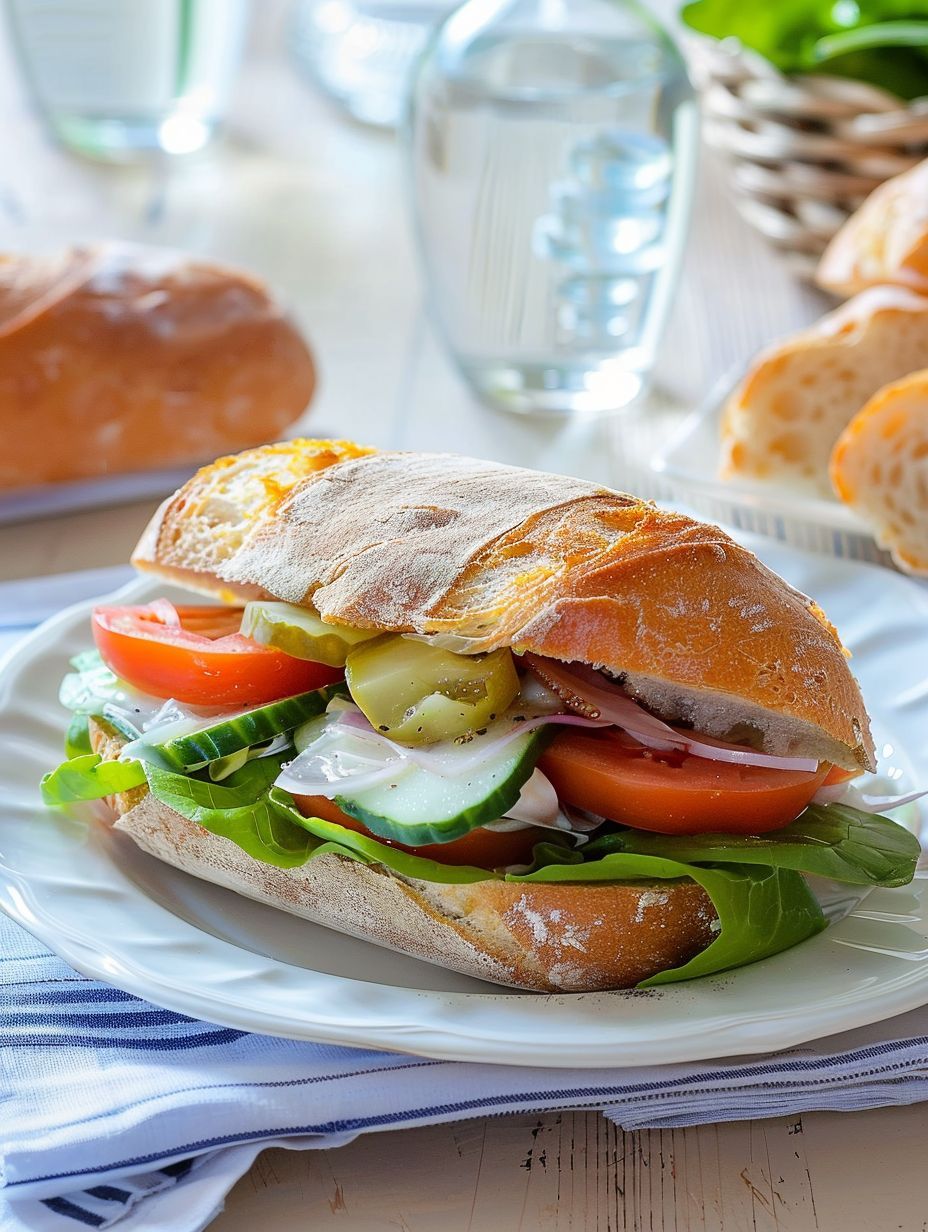
Pan Bagnat is portable, filling, and packed with textures and flavors that make it a satisfying and nutritious midday meal.
French Onion Soup
Soupe à l’Oignon, or French onion soup, is a timeless and cherished dish arising from France. It’s made by slowly caramelizing onions to draw out their natural sweetness, then simmering them in a rich beef or vegetable broth.
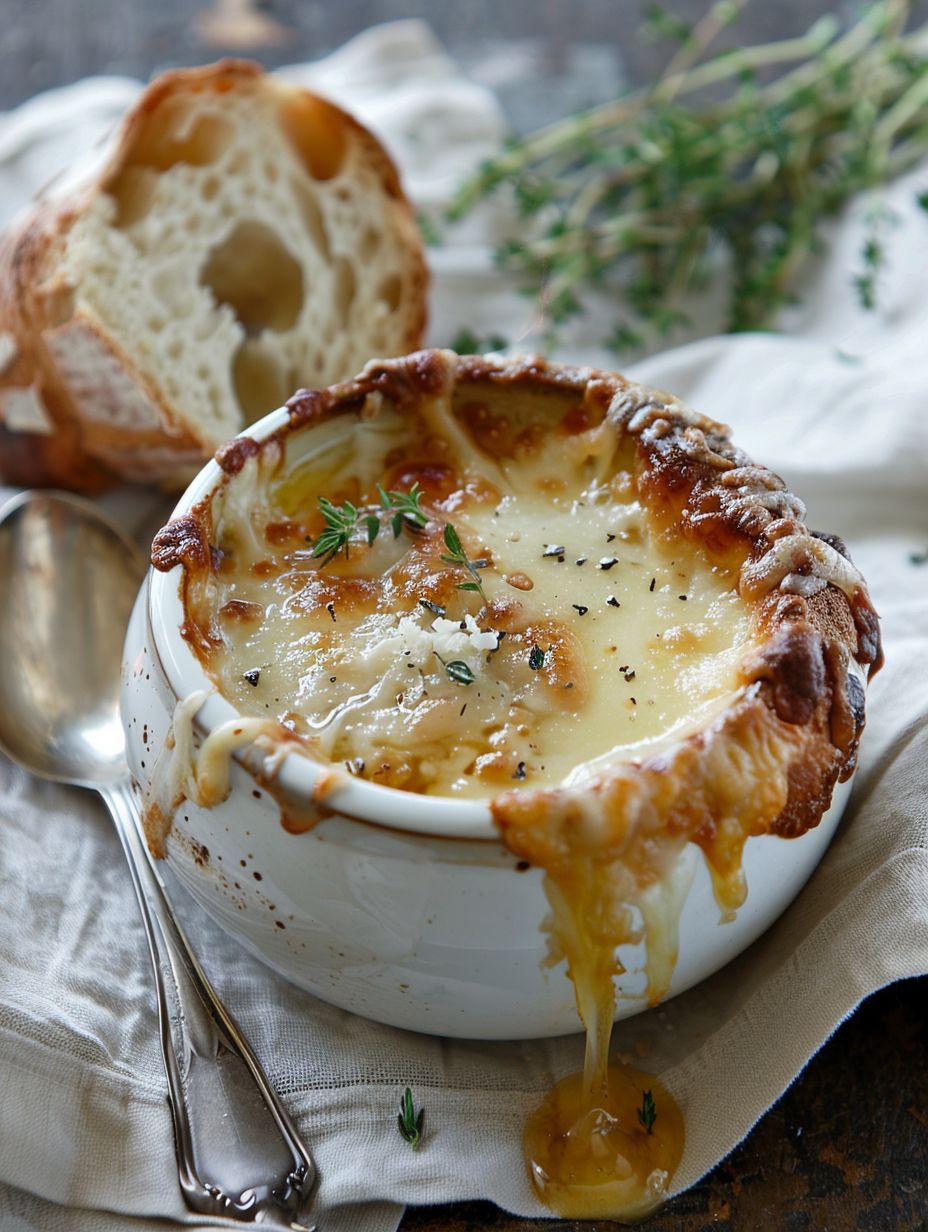
Often flavored with a splash of wine and herbs like thyme, the soup is traditionally ladled into a bowl, completed with a slice of crusty bread, and generously covered with grated cheese such as Gruyère or Emmental. The dish is then broiled until the cheese is bubbling and slightly browned, creating a molten, savory top layer.
The appeal of French Onion Soup as a fall or winter lunch option lies in its blend of simplicity, comfort, and sophistication. The slow caramelization of the onions develops a depth of flavor that’s both sweet and savory, creating a satisfying base for the soup. Its rich, warming nature makes it particularly appealing in colder weather!
While the soup itself is hearty, it’s not overly heavy, making it just right for a midday meal. The soft, sweet onions, flavorful broth, crunchy bread, and melted cheese offer a pleasing variety of textures that delights the palate without leaving you feeling weighed down.
The bubbling cheese and the balance of flavors present a dish that feels indulgent and gourmet, turning an ordinary lunch into a special occasion.
While the preparation requires attention to detail, particularly in caramelizing the onions, the soup can be made in advance and reheated. This quality allows for convenient serving.
French Onion Soup is an enticing selection for lunch, whether as a quiet solitary meal or as an impressive dish for guests. It embodies French comfort food making it a beloved choice for many French families.
Which one of these French lunch recipes are you going to make?

